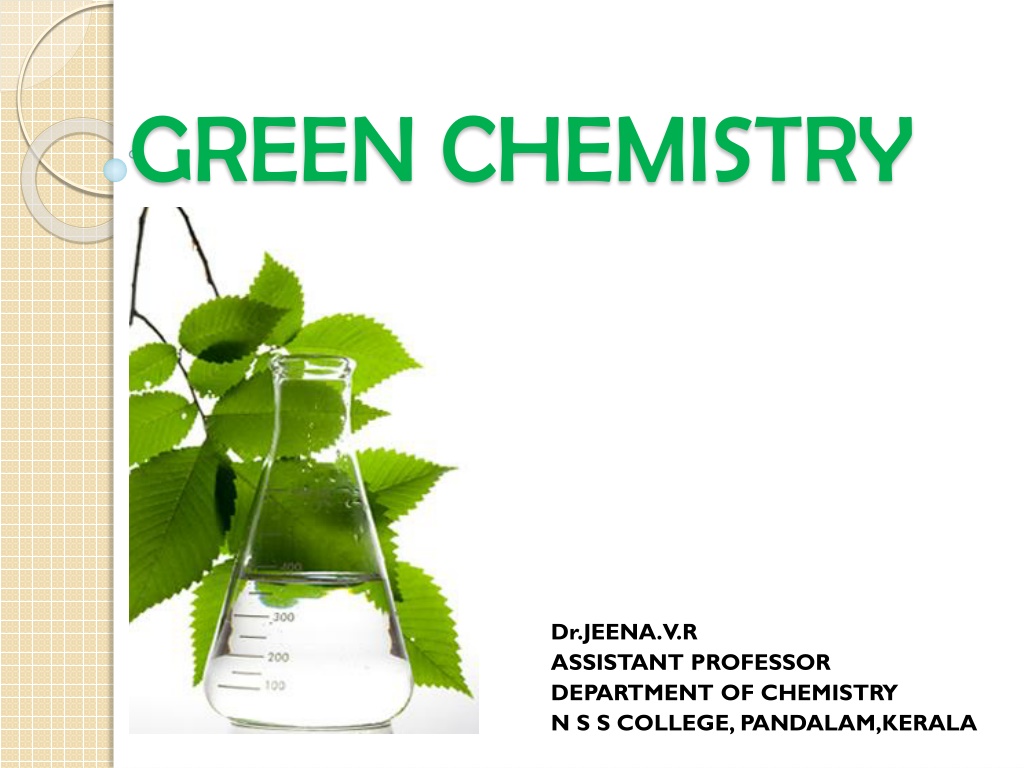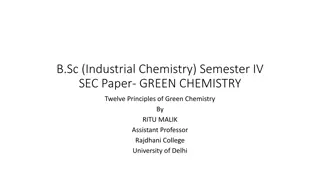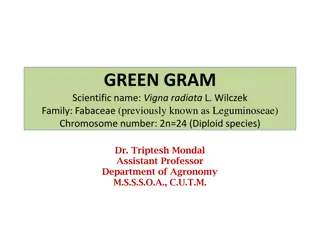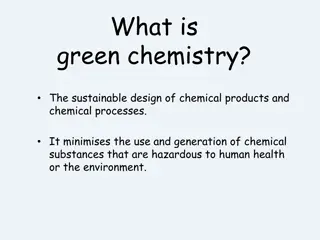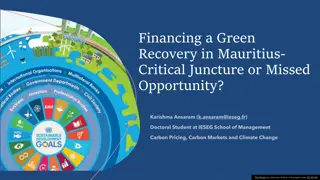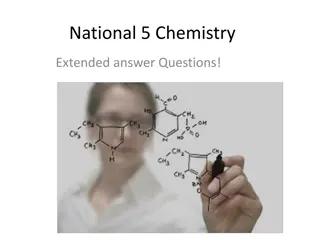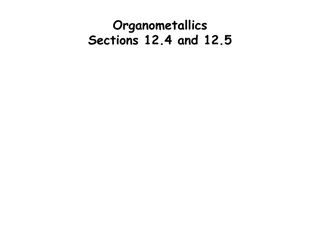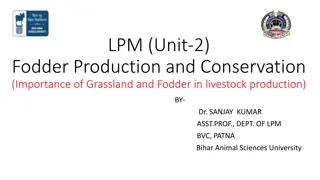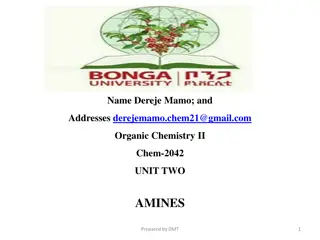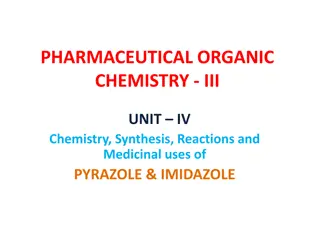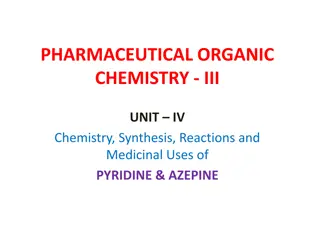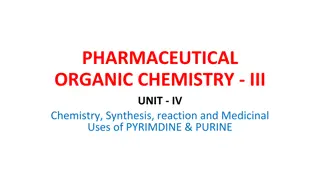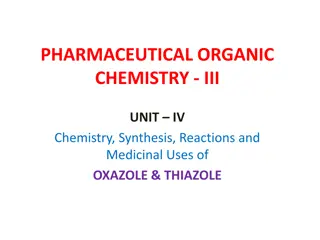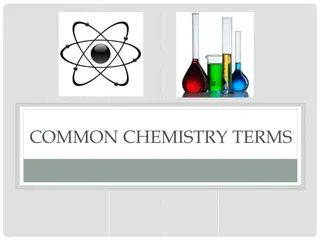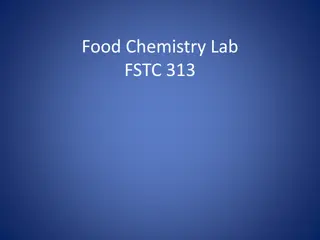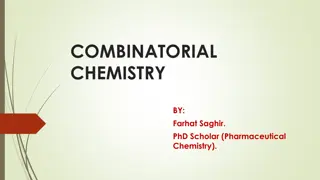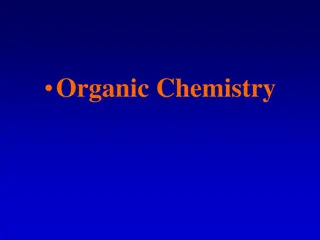Introduction to Green Chemistry and Its Principles
Green Chemistry promotes sustainable practices in chemical processes to reduce environmental impact. Dr. Jeena V., an Assistant Professor from Kerala, emphasizes the importance of principles such as prevention, atom economy, and safer chemical syntheses. Learn about the tragic Bhopal Gas Tragedy and the innovative work of Paul Anastas in advancing Green Chemistry.
Download Presentation

Please find below an Image/Link to download the presentation.
The content on the website is provided AS IS for your information and personal use only. It may not be sold, licensed, or shared on other websites without obtaining consent from the author. Download presentation by click this link. If you encounter any issues during the download, it is possible that the publisher has removed the file from their server.
E N D
Presentation Transcript
GREEN CHEMISTRY Dr.JEENA.V.R ASSISTANT PROFESSOR DEPARTMENT OF CHEMISTRY N S S COLLEGE, PANDALAM,KERALA
Bhopal Gas Tragedy A plant accident in Bhopal, India, released methyl isocyanate. Nearly 20000 people died.
The 12 Principles of Green Chemistry 1. Prevention It is better to prevent waste than to treat or clean up waste after it has been created. Chemical Chemical Process Process
The 12 Principles of Green Chemistry 2. Atom Economy Synthetic methods should be designed to maximize the incorporation of all materials used in the process into the final product. Low atom economy + + Waste (by-products) Raw materials Product High atom economy + Raw materials Product
The 12 Principles of Green Chemistry 3. Less Hazardous Chemical Syntheses Wherever practicable, synthetic methods should be designed to use and generate substances that possess little or no toxicity to human health and the environment. Less hazardous reagents and chemicals When possible, toxic or hazard chemicals can be replaced by safer ones Designing products that are safe and non- toxic, preserving their function
The 12 Principles of Green Chemistry 4. Designing Safer Chemicals: Chemical products should be designed to effect their desired function while minimising their toxicity. Chemical products should be designed to effect their desired function while minimizing their toxicity.
The 12 Principles of Green Chemistry 5. Safer Solvents & Auxiliaries: The use of auxiliary substances (e.g., solvents or separation agents) should be made unnecessary whenever possible and innocuous when used.
The 12 Principles of Green Chemistry 6. Design for Energy Efficiency: Energy requirements of chemical processes should be recognised for their environmental and economic impacts and should be minimised. If possible, synthetic methods should be conducted at ambient temperature and pressure. This can be achieved by Use of proper catalyst , enzymes Use of micro organisms for organic synthesis Use of renewable materials
The 12 Principles of Green Chemistry 7. Use of Renewable Feedstock: A raw material or feedstock should be renewable rather than depleting whenever technically and economically practicable.
The 12 Principles of Green Chemistry 8. Reduce Derivatives: Unnecessary derivatization (use of blocking groups, protection/de-protection, temporary modification of physical/chemical processes) should be minimised or avoided if possible, and such steps require additional reagents and can generate waste and atom economy is also reduced.
The 12 Principles of Green Chemistry 9. Catalysis: Catalytic reagents (as selective as possible) are superior to stoichiometric reagents. Catalysts make the reaction faster decrease the energy requirement can produced single desired product minimize waste.
The 12 Principles of Green Chemistry 10.Designing of Degrading Products: Chemical products should be designed so that at the end of their function they break down into innocuous degradation products and do not persist in the environment. Examples: biodegradable polymer natural insecticides
The 12 Principles of Green Chemistry 11.Real Time Analysis for Pollution Prevention: Analytical methodologies need to be further developed to allow for real-time, in-process monitoring and control prior to the formation of hazardous substances.
The 12 Principles of Green Chemistry 12.Safer Chemicals for Accidents Prevention: Analytical Substances and the form of a substance used in a chemical process should be chosen to minimise the potential for chemical accidents, including releases, explosions, and fires.
Green Chemistry Is About... Waste Materials Hazard Reducing Risk Energy Cost
Conclusion Green chemistry is Not a solution to all environmental problems But the most fundamental approach to preventing pollution.
